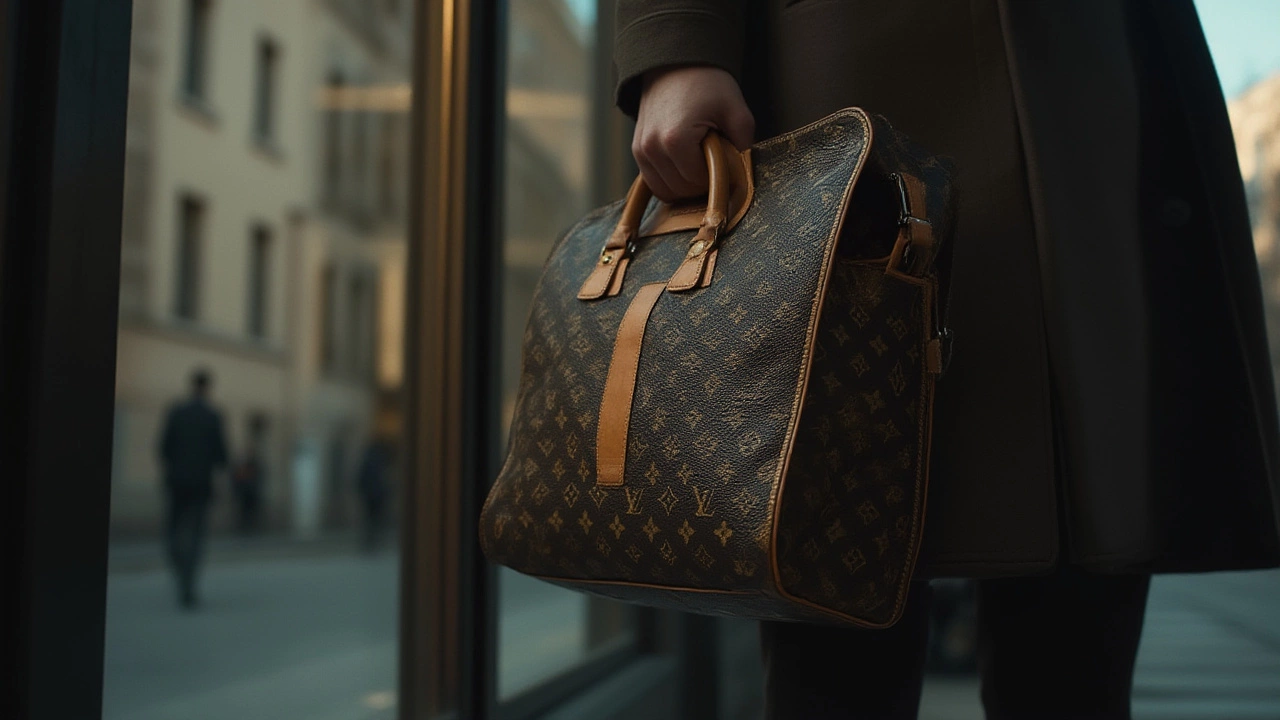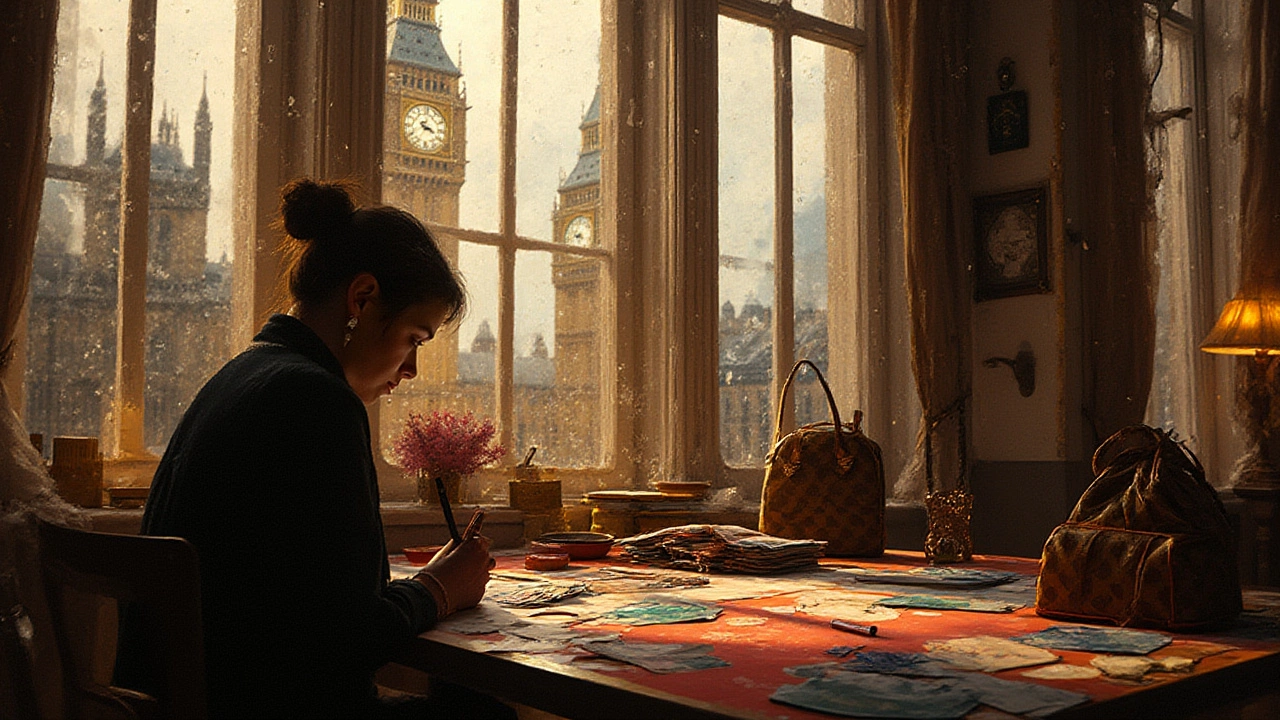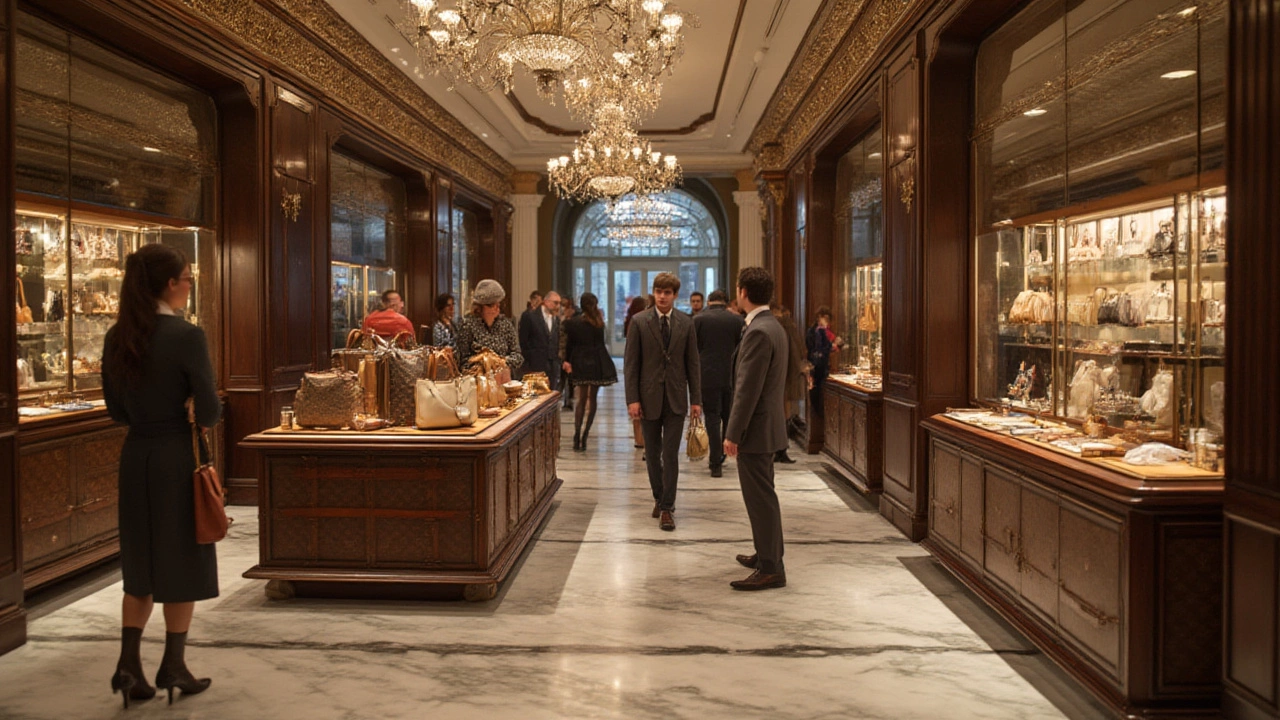When you think of the #1 luxury brand, one name pops up everywhere—Louis Vuitton. No brand sparks more envy, debate, and raw desire. In 2025, Louis Vuitton didn’t just top the charts; it basically rewrote them. The numbers back it up, too: as of last year, Louis Vuitton’s brand value hit an eye-watering $32 billion, making it the world’s most valuable luxury label for the fifth year running. Try searching for the ultimate status symbol—Vuitton dominates every chart and coffee table conversation from Paris to Auckland. It’s not just about handbags or luggage anymore; it’s about an entire lifestyle. But what actually makes one label rise above hundreds of deep-pocketed rivals? And why are we instinctively drawn to those elegant LV monograms?
The Legacy and Allure of Louis Vuitton
There’s luxury, and then there’s Louis Vuitton—a brand that’s basically become a synonym for "unattainable chic." Louis Vuitton kicked off way back in 1854, with one suitcase. The man behind the name, Louis Vuitton himself, started as a box-maker—literally. He hand-crafted luggage for the Paris elite, including Empress Eugénie, wife of Napoleon III. Talk about networking. Fast forward a century and a half, and you’ve got a company blending serious heritage with cutting-edge cool.
In the 1980s, Vuitton led a revolution, becoming the world’s first true luxury conglomerate by merging with Moët Hennessy. You don’t just see Louis Vuitton in fashion magazines; you see it on Formula 1 podiums, art galleries, and celebrity shoulders everywhere—think Emma Stone at Cannes or even sporting legends like Roger Federer. The brand’s ability to stay relevant is almost mystical. Partnerships with icons like Yayoi Kusama, Supreme, and Virgil Abloh flipped the script on what luxury could mean: suddenly, street culture was sitting at the same table as luxury heritage.
Want proof of their reach? The LV monogram is the most counterfeited logo anywhere. Scam artists wish they could be as iconic. But, here's the twist: exclusivity breeds desire. Louis Vuitton never discounts, and you won’t find an LV bag gathering dust in an outlet mall. Scarcity—both real and manufactured—means even longtime clients put their names on waitlists for new launches. That kind of demand is pure gold in retail.
The experience isn’t just about goods; it’s about emotion. When you buy Vuitton, you’re buying a story, a slice of Paris, and membership in a global club where everyone speaks the language of luxury. This magic formula has inspired generations, from the roaring twenties’ jet-setters to today’s TikTok millionaires. Want a tip? If you ever see a limited-edition LV collab—snap it up, fast. The resale market for rare Vuitton pieces is white-hot, and certain styles even appreciate in value, making them investment pieces rather than mere accessories.

What Sets Louis Vuitton Apart From Other Luxury Brands?
We’re spoiled for choice in high-end fashion. Brands like Chanel, Hermès, Gucci, Rolex, and Dior fight for the top slot. Yet, none roar like Louis Vuitton. Why? Three big reasons: quality, consistency, and cultural heat.
First, craftsmanship. Every LV bag is hand-assembled in France, Spain, or the US, with artisans trained for years to perfect their technique. The famous canvas is water-resistant, fire-resistant, and virtually indestructible. A century-old trunk can still look fresh. Louis Vuitton’s workshops create more than just products—they make heirlooms.
Second, the brand bends, but it never breaks. While Gucci might swing from maximalist to minimalist trends, Louis Vuitton walks a steady road. Sure, they hire creative directors like Nicolas Ghesquière and Phoebe Philo, but the DNA—the monogram, the travel vibe, the honest-to-goodness craftsmanship—stays the same. People trust Vuitton not to chase every fad or water down the brand. If you see a LV piece today, chances are you’ll recognize its essence in collections from a decade ago.
Third, Vuitton’s got cultural game. Whether it’s YouTube influencers unboxing a Speedy, or gallery openings where Vuitton is plastered everywhere, the chain reaction keeps going. Celebrities and super-rich clients love the brand because it straddles the line between timeless and hype-worthy—impressing both their parents and their teenage followers.
But it's not just about bags anymore. Vuitton’s strategy to diversify into ready-to-wear, sneakers, perfumes, jewelry, and tech (check those crazy LV Horizon wireless headphones) has paid off in spades. They keep the classics, but never say no to the wow-factor. Remember the Supreme x LV 2017 drop? The collection crashed the internet and left hundreds camping outside stores. Sporty, casual, super-formal—LV covers it all. That’s a rare trick.
Looking to invest in luxury? Fashion analytics site Luxe Digital found that LV keeps popping up as the #1 searched-for brand every year. Even during tough times (say, pandemic lockdowns), their sales barely dipped. According to LVMH's recent financial reports, the Fashion & Leather Goods division—driven by Louis Vuitton—grew revenue by 13% in 2024 alone, smashing the usual luxury market averages. Those are the kind of numbers you can't argue with.
Here’s a little tip if you want the real LV experience: walk into a boutique rather than buying online. You’ll see the art of customer service in action. The staff are like stylists, therapists, and history teachers rolled into one, recommending products you never knew you needed. Ask about the history behind different bags—their eyes light up with genuine passion.
| Luxury Brand | 2024 Brand Value (USD Billion) | Flagship Product | Noteworthy Collab |
|---|---|---|---|
| Louis Vuitton | 32.2 | Speedy Bag, Classic Trunks | Supreme x LV 2017 |
| Chanel | 20.0 | 2.55 Flap Bag | Pharrell Williams capsule |
| Hermès | 18.1 | Birkin Bag | Apple Watch Hermès |
| Gucci | 16.7 | Dionysus Bag, Horsebit Loafer | Balenciaga "Hacker Project" |

The Smart Shopper’s Guide to Luxury: Tips, Myths, and Insider Facts
Buying luxury is part science, part magic. Everyone dreams of that first Vuitton—but how do you spend smart? Start by busting the biggest myth: expensive brands ≠ the best investment. Some luxury labels drop in value as soon as you walk out, but Louis Vuitton’s most-coveted bags, especially limited editions, often appreciate. For example, the value of the LV Neverfull bag jumped by 35% on the resale market in the last three years, according to Fashionphile data. Limited editions signed off by Virgil Abloh? Prices can skyrocket to triple their original retail tags.
If you’re looking for an entry point, wallets and cardholders are the traditional "gateway" Vuitton items. They hold up better than any phone case, and sneak you into the club without breaking the bank. But for collectors, the holy grail is usually the vintage hard-sided luggage. These cases sell for tens of thousands—even battered examples are hot property for interior designers.
Counterfeits are a serious headache. The fakes are better than ever, and sometimes it takes a trained eye to spot the tiny flaws. LV’s official site lists warning signs—off-stitching, “floppy” canvas, missing date codes—but nothing beats buying directly from an official store. Don’t gamble on random Instagram sellers unless you want to get burned.
What about repair? Think you’re stuck if your bag is scuffed? Not in the world of luxury. Vuitton offers full repair services for almost anything back to the 1970s, so your investment is safe—sometimes for generations. That’s why you’ll see three generations of women rocking the same trunk, each one with its own history etched into the hardware.
For true aficionados, there’s the bespoke service. Want a monogrammed guitar case or an LV-covered surfboard? The only limit is your imagination (and your wallet). These one-off pieces are collector gold. So, if you want an accessory no one else will have, get friendly with a Vuitton sales associate and ask about special orders—it’s an open secret among the ultra-wealthy.
Next time someone asks, "What’s the #1 luxury brand?" you know exactly why Louis Vuitton sits on that throne. It’s tradition, exclusivity, and pure marketing brilliance rolled into one—and it shows no signs of slowing down. Luxury isn’t just about price tags; it’s about value, emotion, and history. And, let’s be honest, nothing turns heads quite like that LV logo at an airport lounge. Ready to join the club?
